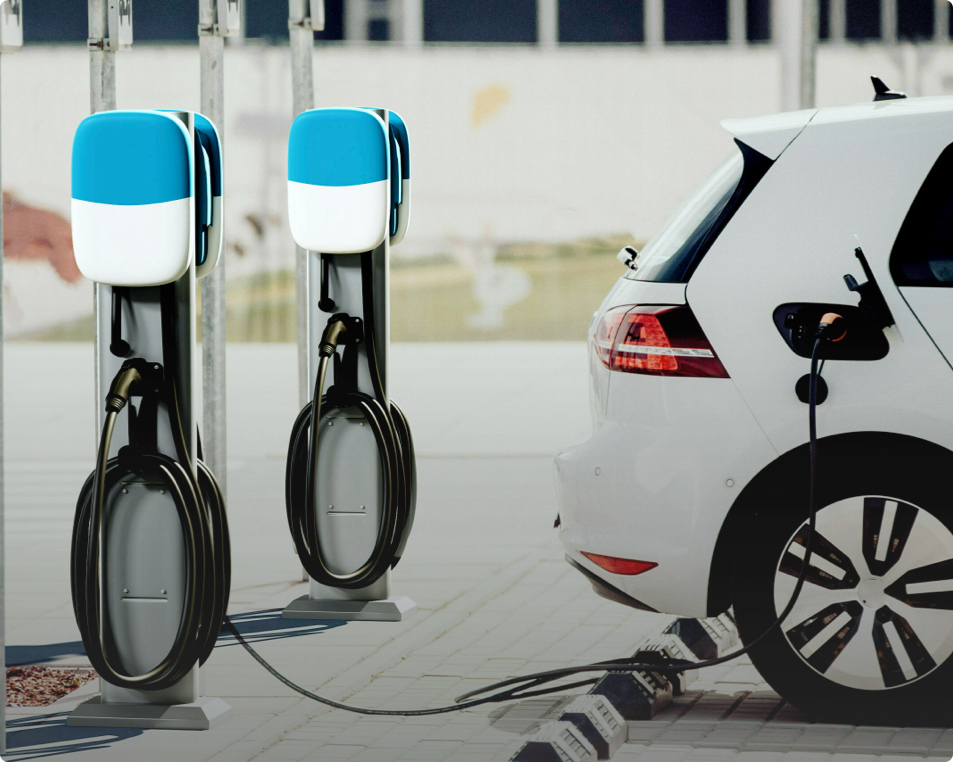El pulso de la industria
Las nuevas señales de dos mercados son más elocuentes que las hojas de especificaciones: PLN Icon Plus acaba de vincular el nuevo mandato de Yakarta sobre energía solar en tejados al futuro. Estaciones de recarga de vehículos eléctricos mientras que los operadores de autopistas de Arabia Saudí están explorando los corredores que van de la montaña a la ciudad en busca de centros de tránsito con cero emisiones de carbono. Para los equipos de compras que están estudiando el despliegue de estaciones de recarga en el Sudeste Asiático y Oriente Medio, la cuestión ya no es "qué cargador", sino "dónde colocarlo mañana".
Por qué la ubicación es mejor que el hardware
Los gestores de flotas, desde Bangkok a Riad, admiten en voz baja el mismo cuello de botella: un cargador premium que permanece inactivo sigue sangrando dinero. En cambio, un emplazamiento bien situado puede convertir un modesto puesto de CA en un motor de ingresos recurrentes. Para los compradores B2B, el coste total de propiedad comienza en el momento en que se firma el contrato de arrendamiento del terreno. Los mitos sobre el tráfico a pie se desvanecen una vez que se trazan los patrones reales de tiempo de permanencia de los conductores de ride-hail y el estacionamiento nocturno de las furgonetas de logística. En resumen, la estrategia de ubicación supera al tipo de enchufe en todo momento.
Macro primero: Elegir el panorama general
Antes incluso de abrir Google Earth, confirma los tres pilares inamovibles.
Carril gubernamental: En Tailandia, los privilegios del BOI para las inversiones relacionadas con la recarga pueden garantizarse con una sola carta de apoyo municipal; en los EAU, los terrenos de zona franca suelen ir acompañados de planos eléctricos previamente aprobados. Pasar por alto estas vías significa volver a hacer el papeleo cuando la demanda se dispara.
Carril de cuadrícula: Una parcela prometedora junto a un hipermercado sigue fallando si la subestación más cercana ya está saturada por las cargas nocturnas del centro comercial. Antes de la foto del apretón de manos, pide a la compañía eléctrica una "carta de garantía de capacidad" no vinculante.
Renovar carril: Las flotas de empresas que buscan compradores de créditos de carbono prefieren los emplazamientos en los que ya hay energía solar en los tejados o acuerdos de transporte cercanos. El cargador se convierte así en un informe de sostenibilidad rentable, no en un coste irrecuperable. Comprueba estos tres carriles en una sola capa del mapa: si alguno está en rojo, muévete pronto.

Microcomprobación: Caminar por el sitio
Zoom a nivel de calle. La visibilidad desde las principales arterias es menos importante para los cargadores de depósito, pero no tiene precio para los centros comerciales de destino. A continuación, hay que vigilar las entradas y salidas: un solo tráiler de 12 metros girando en tres puntos puede bloquear cuatro muelles de carga y provocar una reacción violenta en las redes sociales. La percepción nocturna es el asesino silencioso; las conductoras de Kuala Lumpur evitan abiertamente los sótanos mal iluminados. Busque quioscos de seguridad para todo el día o prevea postes LED de luz blanca cálida en el presupuesto de capex. Por último, recorra el trayecto del cliente: desde que entra, pasa por RFID, toma un café hasta que sale... cada minuto extra de navegación incómoda multiplica las colas en horas punta.
Coincidencia de modelo de negocio: deje que el emplazamiento decida cómo ganan sus estaciones de recarga de VE
Mira el pavimento antes de poner precio al enchufe. El aparcamiento de una fábrica puede transferir cada kWh de sus estaciones de recarga de VE directamente al presupuesto de recursos humanos, reduciendo así los impuestos sobre nóminas. Una cafetería de carretera quiere estaciones de recarga de VE que compartan cada uso con el propietario, creando un reparto de efectivo sin esfuerzo. Los centros de recogida de vehículos de alquiler reservan con antelación las estaciones de recarga, llenan las plazas antes del amanecer y se aseguran un volumen de negocio constante. Los comercios instalan pantallas LED en las estaciones de recarga y venden minutos de publicidad mientras los conductores toman café. Elija el modelo que el tráfico peatonal ya demanda; forzar el ajuste incorrecto en sus estaciones de recarga de VE más tarde es donde se escapa el beneficio.
Kit de herramientas para la participación de las partes interesadas - Acelere sus estaciones de recarga de VE
Casero rápido, sí: Ofrezca un suelo de ingresos por cada sesión que pase por su estación de recarga de vehículos eléctricos, además de una cláusula mensual de retirada de carteles del centro comercial cuando se limite el riesgo de salida.
Apretón de manos utilitario: Una diapositiva que muestre cómo sus estaciones de recarga reducen la carga máxima consigue aprobaciones más rápidas que los gráficos de kilovatios. Ayuntamiento: haga coincidir la inauguración de sus estaciones de recarga de VE con su próximo titular sobre el autobús verde. Mantenga todos los memorandos de acuerdo bilingües para que los administradores de las instalaciones puedan avanzar sin tener que volver a escribirlos.
Señales de demanda local - Escuchar antes de verter
La forma más rápida de elegir el mejor lugar para instalar estaciones de recarga de vehículos eléctricos es leer el asfalto. Al anochecer, siéntate frente a un concurrido aparcamiento y cuenta cuántos coches de alquiler privado están parados con la batería baja. Observa cómo el guardia de seguridad aparta a los conductores que preguntan dónde pueden enchufarse. Esa cola es un estudio de viabilidad gratuito. A continuación, abre el grupo de WhatsApp de la flota local y busca las palabras "batería baja" o "cargador más cercano"; la frecuencia equivale a la demanda latente. Los limpiadores de los centros comerciales suelen saber qué esquina permanece vacía porque los conductores la evitan: marca esa zona roja en tu mapa y vete. Por último, echa un vistazo a la marquesina de la gasolinera de enfrente: si ha añadido puestos para inflar neumáticos en lugar de estaciones de recarga de coches eléctricos, habrás encontrado un hueco que da dinero. Si dejamos que el comportamiento real guíe nuestra preselección, colocaremos las estaciones de recarga de vehículos eléctricos donde la demanda ya espera, no donde las hojas de cálculo esperan que aparezca. Mientras observas la cola de coches sedientos, imagina que te deslizas en un par de Estaciones de recarga de 7 kW para vehículos eléctricos bajo ese toldo infrautilizado, la demanda ya está haciendo cola.
Siguiente paso - Ponga hoy a prueba sus estaciones de recarga para vehículos eléctricos
Antes de verter la primera losa, haga un bucle en su Fabricante de estaciones de recarga para vehículos eléctricos para un kit piloto modular que pueda reubicarse de la noche a la mañana si cambia la afluencia de público. Elija tres ubicaciones piloto -un almacén, un centro comercial o un área de descanso en la autopista- e instale estaciones de recarga modulares montadas en la pared. Si los conductores hacen cola tranquilamente, se amplía la escala. Si empiezan a sonar las bocinas, reubique las estaciones de carga eléctrica durante la noche y cambie de ubicación.
Conclusión
Elegir la mejor ubicación para su estación de recarga de coches eléctricos no consiste tanto en buscar titulares como en acumular pequeñas ventajas irreversibles: una carta de red que nunca caduca, un propietario que ve las ventajas compartidas, una entrada lo bastante ancha para las furgonetas más largas del futuro. Si estas piezas se unen pronto, el hardware se convierte en una simple extensión plug-and-play de una estrategia de suelo que ya se amortiza por sí sola. En el Sudeste Asiático y Oriente Próximo, los ganadores de la próxima década no serán los que instalen más kWh, sino los que coloquen sus cargadores exactamente donde convergen las corrientes empresariales, políticas y de red, y luego se aparten a medida que aumenten los ingresos.

